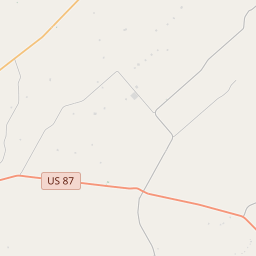First Baptist Church of Smiley
Historical marker location:






George W. Colley, who established a home, gin, and grist mill on Smiley Lake (1 mile S) in 1879, arranged for the Rev. John Stringer to hold the area's first formal Baptist meeting in 1880. People from throughout the area attended the 3-week brush arbor meeting during which 117 people were baptized in Smiley Lake.
Smiley Lake Baptist Church, organized in 1882 with 34 charter members, erected a sanctuary and organized a Sunday School. A new sanctuary was built in 1893 on two acres donated by F. P. and M. L. Colley. The congregation was renamed Smiley Baptist Church in 1894.
In 1906 several church members established Calvary Baptist Church in the new railroad town of Smiley. In 1915 Smiley Baptist Church moved to a site in Smiley donated by Maggie Glover. The Smiley and Calvary Churches reunited as the First Baptist Church in 1916.
In 1921 the congregation withdrew from the San Antonio Baptist Association and joined 12 other churches to form the Gambrell Baptist Association. Church membership grew and in 1949 a new church building was erected. A parsonage was built in 1962.
The church continues to build on a tradition of Sunday School programs, women's group programs, Baptist instruction, and support of home and foreign missions
As one of the most visible programs of the Texas Historical Commission (THC), historical markers commemorate diverse topics in Texas history, including: the history and architecture of houses, commercial and public buildings, religious congregations, and military sites; events that changed the course of local and state history; and individuals who have made lasting contributions to the state, community organizations, and businesses.
The Texas Rangers, a famous law enforcement agency, were first organized in 1835 to protect settlers from Native American attacks.
Following the Texas Revolution and the establishment of the Republic of Texas, Gonzales County played a vital role in the formation of the new state. The town of Gonzales became the capital of DeWitt County and remained a prominent center for trade and agriculture. The 1850s brought an influx of German immigrants to the area, who brought with them their agricultural expertise and helped to further develop the county's economy.
During the Civil War, Gonzales County primarily sided with the Confederacy, and many residents served in the Confederate Army. After the war, the county faced a period of reconstruction and struggled with political and economic challenges. However, through the late 19th and early 20th centuries, the discovery of oil and the expansion of the cattle industry brought renewed growth and prosperity to Gonzales County.
Today, Gonzales County remains a vibrant community with a mix of agriculture, oil and gas production, and diverse industries. The county is also known for its rich cultural heritage, including historical sites and the annual reenactment of the Battle of Gonzales. The county's history is celebrated and preserved through museums, historical markers, and the pride of its residents in their shared past.
Gonzales County Timeline
This timeline provides a condensed summary of the historical journey of Gonzales County, Texas.
- 1834 - Gonzales County established as a municipality of Mexico
- 1835 - "Come and Take It" cannon skirmish occurs in Gonzales, marking the start of the Texas Revolution
- 1836 - Texas gains independence from Mexico; Gonzales County becomes part of the Republic of Texas
- 1846 - Texas becomes a state, and Gonzales County remains a political subdivision
- 1861-1865 - Gonzales County residents participate in the American Civil War
- 1878 - The Gonzales Inquirer, the oldest continuously published weekly newspaper in Texas, is established
- 1887 - Gonzales County Courthouse is built
- 1891 - The Harwood and Gonzales Railway connects Gonzales to the Texas railway network
- 1905 - Oil is discovered in Gonzales County, leading to an economic boom
- 1936 - The Gonzales Warm Springs Rehabilitation Center, now the J.B. Wells Park, opens as a medical facility for polio patients
- 1949 - The Gonzales Memorial Museum is established to preserve local history
- 1967 - The Gonzales State School opens to serve individuals with intellectual and developmental disabilities
- 1988 - The Confederate Soldiers Monument is erected in the Gonzales Memorial Museum